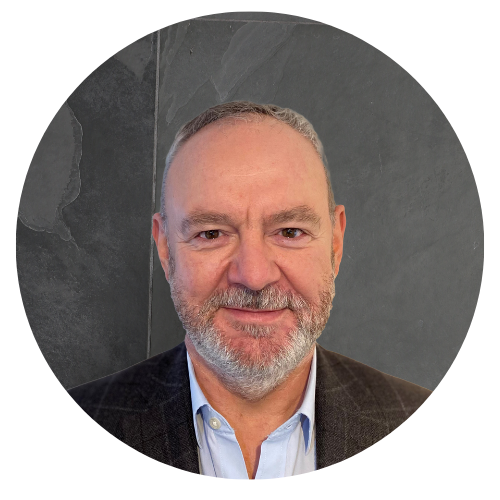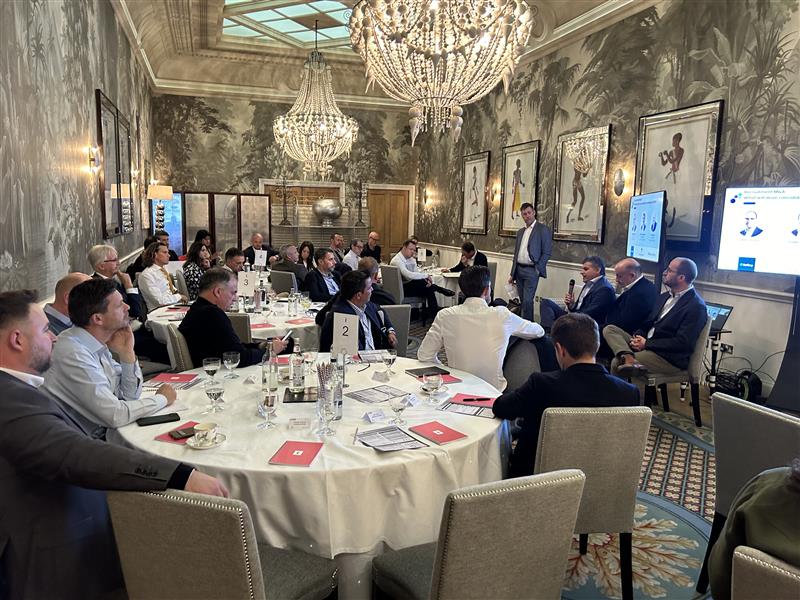It’s a heady time to be at the helm of talent acquisition at the UK’s favourite recipe box supplier HelloFresh. The company has grown rapidly over the past three years, prompting a series of refinements to their TA strategy as they scale up and expand into new European markets. They are currently putting the final touches to TA model 5.0.
Jill Leonard, whose extensive career in recruitment includes senior positions at Ocado and Barclays, sat down with Ken Brotherston, to reveal what HelloFresh is cooking up next.
Ken Brotherston: Could you tell us a little about the evolution of your talent acquisition strategy and what you plan to achieve with TA 5.0?
Jill Leonard: At first, we focused on enabling the organisation through the operating model, so talent acquisition partners with coordinators and schedulers, and then we worked on our platforms. By that time, we had got through the pandemic and were recruiting larger and larger numbers of people. We knew that we were about to go into hyper-growth and would need to radically scale up, so the 4.0 strategy involved a full operating model encompassing talent management, talent intelligence, and executive hiring. With so many recruiters involved, we needed to be very clear about the organisational structure, how the roles intersected, the health metrics, the productivity numbers, and the team engagement figures.
Strategy 5.0 is building on those foundations and evolving our TA further as a revenue-generating part of the business, so we are able to cover the cost of our own people, invest in their training, and perhaps be seen differently by those in the boardroom because we’re bringing in customers.
“Candidate experience metrics laid the foundation for us to be able to turn a disgruntled candidate into a customer. We’re doing a lot of work now to decide the touchpoints and niceties. Should we be sending unsuccessful candidates free recipe boxes or product discount codes?”
KB: I understand that TA 5.0 aims to transform unsuccessful job candidates into advocates and, ultimately, customers. How do you plan to do this and what candidate metrics are you using?
JL: While turning candidates into customers was going to be the main focus of 5.0, we’ve decided that this will just be one facet of it. Because of the shift in the market, the shift in what we are hiring for is quite tangible; we’ve gone from hiring at scale to hiring the very best. We want to raise the bar and we’re very comfortable that the proportion of people who are going to be falling out of the hiring process will be larger.
The preparation started in TA 4.0 with candidate experience metrics which laid the foundation for us to be able to turn a disgruntled candidate into a customer. We’re doing a lot of work now to decide the touchpoints and niceties. Should we be sending unsuccessful candidates free recipe boxes or product discount codes?
To improve the candidate journey, we are focusing on respectful hiring. Candidates want to feel they are being treated fairly and that we have been transparent about what the process involves. So, for example, it’s about not declining someone at interview stage on the basis of something that you could have picked up from their CV.
It’s also about being really clear with feedback. We have started to use an automated scheduling tool to offer feedback as a matter of course after first interview. We also insist that our recruiters return candidate score cards within 24 hours so the feedback is available as soon as possible.
We have had some pushback – “We need our recruiters to recruit and not be spending time doing this” – but the percentage of candidates taking this offer up is actually pretty small, and reputation hinges on these kind of initiatives. If you have invested time and energy with us, you can book a feedback call.
KB: Many organisations talk about turning candidates into customers but don’t do it. We had the well-documented case of Virgin Media [in 2014, Virgin made candidate experience a company-wide priority after realising unhappy candidates were costing them £4.4 million a year in cancelled subscriptions]; people have been talking about that for years but there has been nothing like that since.
Looking at a very basic metric – do candidates hear whether they were successful or not? – I don’t think the rate is even 50%, and that hasn’t changed in 30 years. The question I have is: Why? Why have organisations not focused on this in the way that Virgin Media has? The reason may be that they don’t care enough.
JL: I think you’re right. We have been too overly apologetic in our profession when we talk to people: “I’m sorry that we have to have a sit-down meeting today to talk about your vacancy and that I can’t just send you 20 CVs to pick from”. No. If you’re a line manager, this is part of your job.
A lot of these things are not difficult. Don’t send out a canned email signed ‘from the recruitment team’; put someone’s name on it. There will be the odd one or two times where a really disgruntled candidate will then contact the person whose name is on the email, but it’s worth taking that chance for the thousands of other times that unsuccessful candidates feel heard and appreciated.
“Recruitment is going to go through peaks and troughs in each market, so it is more sensible to flex our team accordingly instead of paying for peak headcount. Talent acquisition as a service means you need to know your numbers and your resources, hire quality people, and set expectations.”
KB: What else do you aim to do with TA 5.0?
JL: TA 5.0 is about talent acquisition as a service; it’s a model under which we act as an internal RPO. Recruitment is going to go through peaks and troughs in each market, so it is more sensible to flex our team accordingly instead of paying for peak headcount in every market we operate in. Yasar Ahmad, Global Vice President of Talent, Mobility and Rewards at HelloFresh, is the genius behind this model; it’s a real innovation for us.
So, I am constantly managing my resources, using platforms, productivity levels, and health metrics to understand who is at capacity and who isn’t, as well as the softer aspect of managing planned and unplanned absences. Talent acquisition as a service means you need to know your numbers and your resources, hire quality people, set expectations and manage time with the individual CEOs. It’s been a joy riding the wave of this innovation and this amazing fresh thinking, to use the pun.
KB: There are some external RPOs trying to create TA as a service and I think it makes perfect sense to do that internally. Coming back to this concept of turning candidates into customers, how do you know when that’s happened?
JL: We’re aiming to go live at the end of this year, so that will be our start point, and we will have to work out some methodology of tracking the use of discount codes, so that is one of the things that we are working out now. We are a very data-driven organisation, so we have data conversations on a daily basis. We have started to put together intelligence packs but it’s quite embryonic at this moment.
KB: As a relatively new corporate function, it’s going to take some time for TA to mature and become embedded in organisations. What I’ve seen shifting post-pandemic in particular is that CEOs are now getting fired because they didn’t do recruitment right; it’s taking this to a whole different level.
JL: Recruitment is the gateway to an organisation and you cannot have a successful organisation if you don’t have great talent doing the job of finding the talent. It might be simplistic, but it’s what I believe. A lot of my time and energy is invested in leading teams and encouraging people to be the best that they can be.
Our active programme is to increase the knowledge and skills set of coordinators, the people who are scheduling interviews, and the people who are sourcing talent. We are now at a point where we have some amazing talent in our team and have become a victim of our own success because they are being poached by other parts of the organisation!
KB: What will happen beyond TA 5.0?
JL: TA 5.0 is about responding to what the business needs to go from good to great. The next steps will be to build TA capability to another level, getting ahead of what the business needs to truly transform the function. But I dare say that whatever is laid down for TA 6.0 and TA 7.0 will evolve because the market will be in a very different place in 12 months’ time. TA 5.0 will take us to the end of 2024, and then we will review, and decide where we go from there.
Top Takeaways
- TA is the enabler and gateway to success for any organisation.
- HelloFresh’s latest talent acquisition strategy, TA 5.0, focuses on two key goals:
1. Transforming TA into a revenue-generating exercise by turning candidates into customers, as well as improving candidate experience as a whole
2. Building a ‘talent acquisition as a service’ model, under which TA acts as an internal RPO - Improving candidate experience centres on embedding respectful hiring, creating a fair experience, and process transparency; for example, HelloFresh offers all candidates a feedback session after first interview.
- TA is evolving to anticipate business needs and become truly integrated into organisations as a business critical function.












